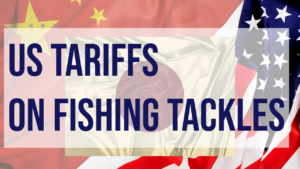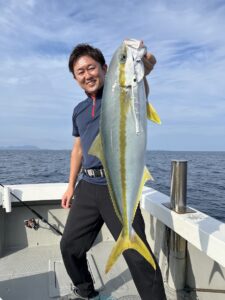History of Black Bass Fishing and Brands Established in Each Era
The brief history of Japanese bass fishing is shown in relation to some major brands and famous bass tournament anglers.
1925
First Release of Black Bass into Lake Ashinoko. A Businessman Tetsuma Akahoshi, who was educated in Pennsylvania Univ, imported black bass from the United States and, with the cooperation of Tokyo Imperial University (now the University of Tokyo), released them into Lake Ashinoko in Kanagawa Prefecture. It is said that he was planning to settle bass into the lake Kawaguchiko, but it was not easy for some political reasons. And Lake Ashinoko was selected because that lake was a place for experimental studies of Tokyo Imperial University.
The reason for the first settlement was that there were no proper fish to survive under the rapid development of Japan. After the war, Japan was starting to develop with a lot of big infrastructure. Many dams were included in the plan for such development. For Mr. Akahoshi, black bass was the proper species for the new environment, such as reservoirs. And his experiment was started with the fish. His target was to install the fish not only for the future supply of good food sources but also good targets of leisure fish.
And the ecosystem was stabilized in the Ashinoko lake, by the time of the 1950’s. Then, black bass fishing was recognized by the anglers gradually.
1963
Black Bass was released into Lake Kawaguchi, in Yamanashi prefecture. It promoted the spread of bass in the Kanto region.
1970s
The fish was spread nationwide and bass fishing was getting popular.
1980s
The booming of bass fishing was starting. The specialized magazines were launched. The first bass fishing magazine, Basser, started to be published in 1980. It became popular as an important information source.
Japanese anglers started participating in bass fishing competitions, domestically and internationally. Namely some top anglers went to B.A.S.S. and gained some good results, such as Mr. Masaki Shimono,
In the period of 70’s and 80’s, these brands were established; HMKL (1972), Smith (1977), Tackle House (1982).
1990s
The market expanded in Japan, and more and more tournaments took place. It was clearly booming. People enjoyed the high-growth economy and their leisure time. That gave chances to many enthusiasts and entrepreneurs to make bass fishing lure brands.
To name major brands established in this period;
Valleyhill (1990), Evergreen (1990), Deps (1996), Megabass (1997), Jackall (1999), IMA (1998), DUO (1995), Nories (1995), Lucky Craft (1993, Lucky Craft USA in 1997), Keitech (1996).
And along with that, many bass fishing competitors went to the US and gained fame.
Mr. Norio Tanabe (founder of Nories), Mr. Takahiro Omori (still a competitor in the US tournament scenes), Mr. Morizo Shimizu, Mr. Toshi Namiki (founder of OSP)
2000s
After that booming era of Japanese bass fishing, the dark shadows started to emerge in the 2000’s.
In 2005, the Invasive Alien Species Act was enacted. And it restricted the transport and release of black bass. For this legislation, some activists tried to remove the bass out of some lakes and ponds. Under this circumstance, the bass fishing remained popular, with some limited number of lakes allowed fisherman to catch bass (for example, the lake Kawaguchiko.)
In this period, the fishing kept attracting anglers as well as entrepreneurs and these brands were established; Major Craft (2000), O.S.P (2000), Imakatsu (2004), Gan Craft (2004).
2010s
IT brought new communication and SNS and YouTube started to feed the niche segments of the markets. It encouraged some of the new generation of bass anglers. Though the socio-political situation is not comfortable for bass fisherman, it kept attracting new businesses in the bass fishing products.
During this period, bass fishing in Japan saw itself as more of the fashion, and pursued for more styles in fishing. The new brands born in this era shows that; Raid Japan (2011), Geecrack (2014), DRT (2015).
2020s
The tough circumstances for black bass continued into the 2020’s, and it led the bass fishing society to pursue a more sustainable fishing culture. There were people who put emphasis on the efforts to balance environmental conservation with fishing culture. These included the promotion of catch & release, and it tried to give ways to countermeasure against invasive species.
As you can see, there was a big peak of bass fishing in the 1990's. Many of the current major brands gave birth in the 1980’s and 1990’s. It clearly made the basis of our lure production we can currently enjoy.
Future is the thing of concern for Japanese anglers. Though there are disputes around our favorite invasive species, black bass, it is the fact that it has been in Japan for the last 100 years. It is long enough to make the ecosystems sustainable, including this species. It made erasing of the species impossible. We have to admit it and think about the future.

